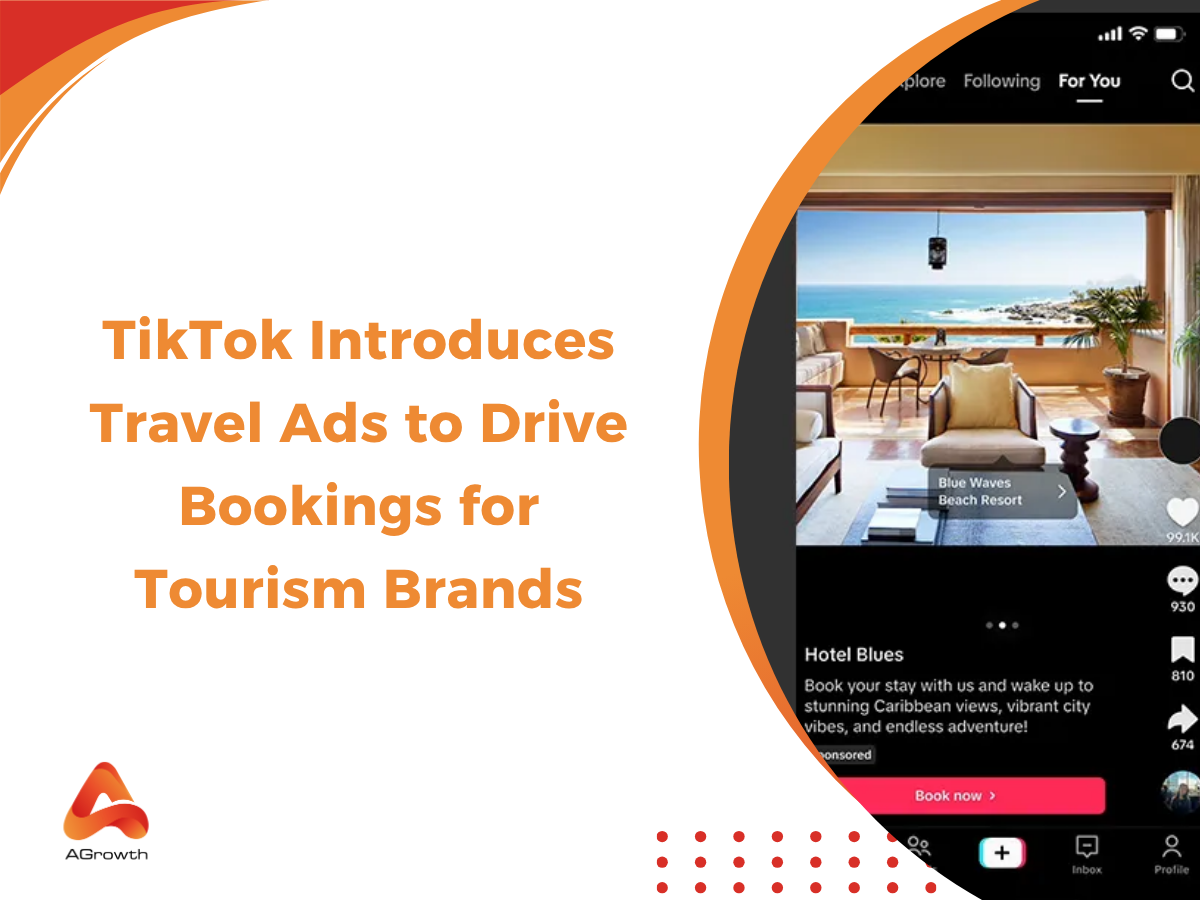
Table of Contents
In-Feed TikTok Ads: Everything You Need to Know to Run Effectively
TikTok has transformed digital advertising by allowing brands to blend their promotions directly into the content users love. Among its ad options, In-Feed Ads are one of the most popular formats for businesses looking to connect with audiences naturally and effectively.
In this guide, we’ll explore what In-Feed TikTok Ads are, how they work, the differences between Spark Ads and Non-Spark In-Feed Ads, and how to make the most of this format in your campaigns.
What Are In-Feed TikTok Ads?
In-Feed TikTok Ads are video advertisements that appear seamlessly in users’ "For You" feeds, just like regular user-generated videos. They look native to the platform, which increases their chances of being watched, liked, and engaged with.
These ads can include a call-to-action (CTA) such as "Shop Now," "Download," or "Learn More," encouraging users to take action directly from the ad.
TikTok offers two types of In-Feed ad buying methods:
-
Auction In-Feed Ads: These are flexible, performance-driven ads where advertisers set bids based on objectives like conversions, clicks, or views. Ideal for small to mid-sized businesses.
-
Reservation In-Feed Ads: These guarantee impressions by securing ad placements ahead of time. They’re typically used by larger brands aiming for broad reach and high frequency.
Each method serves different goals. Auction is better for results-based campaigns; Reservation works well for maximizing visibility during product launches or big brand events.
Key Features and Ad Specs of In-Feed TikTok Ads
To get the most out of In-Feed ads, it’s essential to understand the format’s specifications and available features.
-
Video duration: 5–60 seconds (9–15 seconds recommended)
-
Video aspect ratio: 9:16 vertical
-
File format: .mp4, .mov, or .avi
-
Caption length: Up to 100 characters
-
CTA buttons: Over 20 options available, including "Install Now", "Shop Now", "Subscribe", etc.
-
Sound: Choose trending music or original audio to increase video performance.
-
Hashtags: Add relevant hashtags for better discovery (especially useful if integrating with hashtag challenges).
-
Profile Clicks: For Spark Ads, users can click through to the creator or brand’s TikTok profile.
-
Engagement Metrics: Spark Ads retain the video’s original likes, comments, and shares—useful for social proof.

How to Set Up In-Feed Ads in TikTok Ads Manager
Running In-Feed Ads on TikTok doesn’t require technical expertise, but following a structured setup process is key to success. Here's a detailed walkthrough to help you build, configure, and launch your campaign properly.
Step 1: Log In to TikTok Ads Manager
Access TikTok Ads Manager using your business or agency account. If you don’t have one, you’ll need to register and get verified first.
Step 2: Create a new campaign
Click "Create" in the Campaign section and select your marketing objective. TikTok offers the following categories:
-
Awareness
-
Conversion
-
Consideration
Choose the objective that aligns best with your KPIs. For performance-focused campaigns, Conversions are commonly used.
Step 3: Set up the Ad Group
Within each campaign, you can have multiple Ad Groups to test different targeting, placements, or creatives.
Configuration options:
-
Placement
-
Targeting
-
Budget & schedule
-
Optimization goal
Step 4: Create your In-Feed Ad
You can either upload your own video creative or use TikTok's built-in Video Creation Kit to build content using templates.
Ad details to fill out:
-
Ad name (for internal use)
-
Creative type:
-
Upload video
-
Use existing TikTok post (for Spark Ads requires authorization code)
-
Ad Text: Your caption, up to 100 characters
-
CTA Button: Choose from TikTok’s list (e.g., "Shop Now", "Download")
-
Display name: Your brand or campaign name
-
Destination URL: Website, landing page, or app store link
For Spark Ads, paste the authorization code from the creator’s TikTok video to pull their organic content into your ad.
Step 5: Set Up Tracking and Pixel
Install the TikTok Pixel on your website (or SDK for mobile apps) to track conversions and optimize performance. Choose your conversion event type:
-
Page View
-
Add to Cart
-
Complete Payment
-
Register
-
App Install
-
In-App Purchase
Use event priority ranking to tell TikTok which conversion actions are most important to your campaign goals
Step 6: Submit and launch
Preview your ad to ensure everything looks correct across different device views.
Then click Submit. TikTok will review the ad for compliance (usually within 24 hours). Once approved, your campaign will start running according to the schedule you selected.
Creative Best Practices for In-Feed TikTok Ads
Creating a scroll-stopping in-feed ad on TikTok isn’t just about uploading any video—it’s about delivering content that feels native, engaging, and valuable to your audience. Here are the top creative best practices to help your in-feed ads perform better and connect with users more authentically:
Hook viewers within the first few seconds
TikTok is a fast-paced platform, and if your ad doesn’t capture attention quickly, viewers will scroll past. Start with a compelling visual, bold text overlay, or an intriguing question. Aim to grab attention in the first 2–3 seconds.
Keep it short and concise
While TikTok allows ads up to 60 seconds, the sweet spot is typically between 9 to 15 seconds. Shorter videos maintain viewer interest and improve completion rates, which helps TikTok's algorithm favor your content.
Design for sound-on viewing
TikTok is a sound-on platform. Use background music, voiceovers, or sound effects to enhance engagement. Trending TikTok audio can also increase visibility and make your content feel native.
Follow a clear narrative
Your ad should tell a story or follow a logical sequence. A classic format is:
-
Hook (first 3 seconds)
-
Problem or message
-
Solution or CTA (call-to-action)
This structure helps viewers understand your message and stay engaged throughout the video.
Add text overlays and captions
Overlaying text helps highlight key points and increases retention. Since many users scroll without full attention or in noisy environments, captions ensure your message is still communicated clearly.
Use high-quality, vertical video (9:16)
Your creative should use the full vertical screen for an immersive experience. Avoid using horizontal formats or borders that make the ad look like it doesn’t belong on TikTok.
Align with TikTok trends and aesthetics
Make your ad feel like organic TikTok content. This could mean participating in trends, using popular effects, or replicating user-generated content (UGC) styles.
Include a strong and clear CTA
Whether it’s “Shop Now,” “Learn More,” or “Try It Free,” your CTA should be obvious and relevant to your campaign goal. Place it visually in the video and in your ad caption.
Test different creatives
No single creative will work for every audience. Run A/B tests with different intros, tones, visuals, and CTAs to see what resonates best.
Common Mistakes to Avoid
While in-feed ads offer strong performance potential, many advertisers fall into common traps that reduce results. Avoiding these mistakes can help you maximize ROI and reduce wasted budget.
Ignoring audience behavior
TikTok users expect fast, fun, and visually compelling content. If your ad feels too slow, overly branded, or disconnected from the platform’s style, it may come across as an interruption rather than an experience.
Skipping the hook
Some advertisers waste the first few seconds with logos or generic intros. Since users decide quickly whether to keep watching, this delay can hurt watch time and performance. Start strong and add branding subtly.
Using low-quality or incorrect formats
Videos that are blurry, horizontal, or with black bars significantly reduce engagement. TikTok is a mobile-first app—ensure your creatives are shot in 9:16 format, in high resolution, and fill the screen.
Forgetting about subtitles or text
Failing to include text overlays or captions can cause key information to be missed—especially since many users watch without sound. If your message is only spoken, it's at risk of being lost.
No clear Call-to-Action
Your ad should guide the viewer on what to do next. Ads that entertain but don’t convert often lack a strong CTA. Be direct and make it easy for users to act immediately.
Overly polished or overproduced videos
Overly produced content can feel out of place on TikTok. Ads that mimic organic content or user-generated styles typically perform better. Avoid looking like a commercial.
Failing to analyze and optimize
Publishing a campaign without monitoring its performance leads to missed opportunities. Use TikTok Ads Manager to track KPIs like watch time, CTR, and conversions. Based on the data, adjust your creative or targeting.
Neglecting mobile load speed
If your landing page loads slowly after a user clicks, you risk losing them. Make sure your destination page is mobile-optimized, loads fast, and is consistent with the ad message.
Not testing enough variations
One of the biggest mistakes is running only a single version of an ad. Creative fatigue sets in fast on TikTok. Rotate creatives regularly and test multiple formats, captions, and visuals to stay competitive.
Spark Ads vs Non-Spark In-Feed Ads
Both Spark and Non-Spark Ads can appear as In-Feed ads, but they differ in how they are created, displayed, and engaged with by users.

What are Spark Ads?
TikTok Spark Ads use organic posts published by real TikTok accounts, either your brand’s own page or a creator’s account (with permission). These ads retain the original post’s metrics and allow users to interact with them just like any regular TikTok video.
Key features of Spark Ads:
-
Show the original poster’s username and profile image
-
Allow users to like, comment, and follow
-
Enable the use of user-generated content (UGC) and influencer posts
-
Drive traffic to both landing pages and TikTok profiles
What are non-spark In-feed ads?
Non-Spark Ads, also known as standard In-Feed Ads, are created and uploaded directly through TikTok Ads Manager. These ads are not linked to a real TikTok account and don’t allow social interactions such as likes or follows.
Key features of Non-Spark Ads:
-
Run under a placeholder or system-generated account name
-
Only focus on driving direct actions (e.g., clicks or installs)
-
No comment, like, or share functionality
-
Provide more creative control over content and branding
Conclusion
In-Feed TikTok Ads offer a powerful way to reach users directly within the flow of their content experience. With flexible targeting, immersive formats, and the option to choose between Spark and Non-Spark placements, brands can tailor their campaigns to align with both performance goals and creative vision. Whether you're aiming to increase awareness, drive conversions, or build community engagement, mastering this ad format is key to thriving on TikTok.
But running successful campaigns also requires more than just good creatives—you need access to a reliable ad account setup that can scale with your strategy.
Get started with a trusted TikTok ads account from AGrowth
AGrowth provides high-quality TikTok ad accounts tailored for advertisers who want stability, faster approvals, and higher spending thresholds. Whether you're just starting out or scaling fast, we offer the infrastructure you need to launch and grow with confidence.
Explore AGrowth’s TikTok Ad Account Services and take your in-feed ad strategy to the next level.
Related article:










Your comment